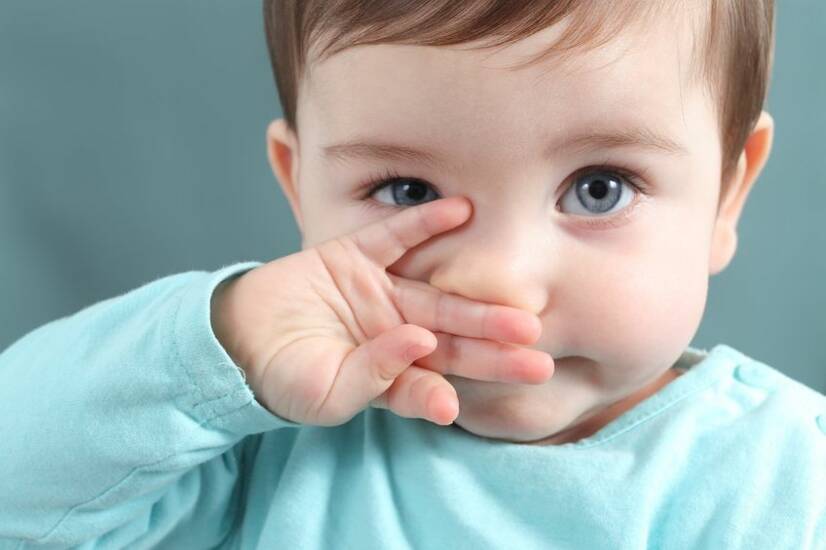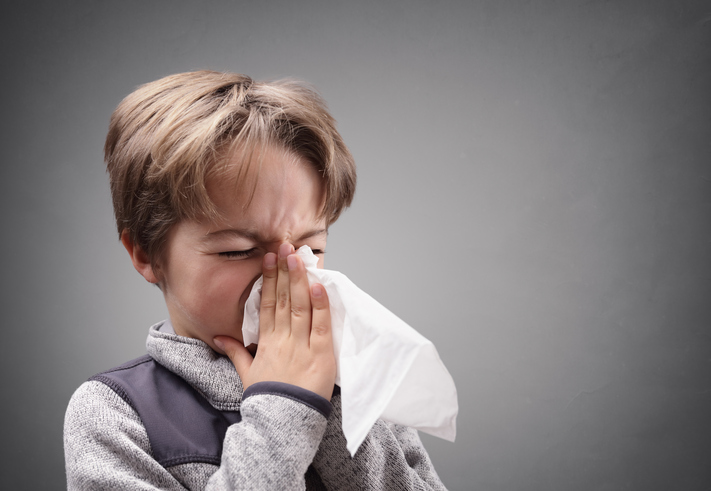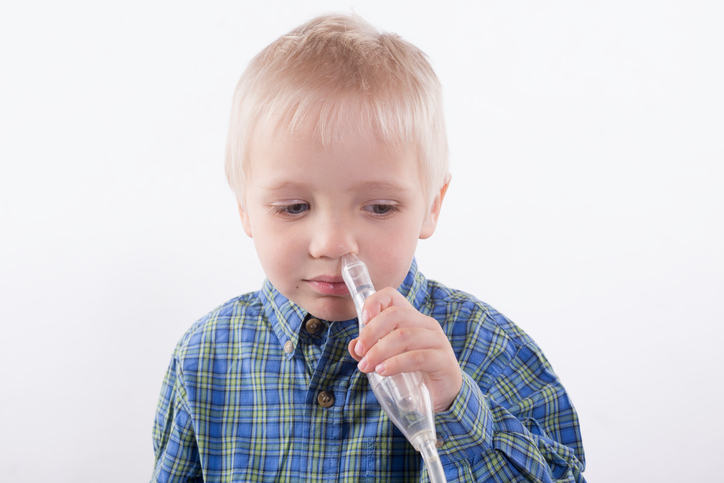- pubmed.ncbi.nlm.nih.gov - Does post-nasal drip cause cough in childhood?
- webmd.com - What Is Postnasal Drip?
- health.harvard.edu - Treatments for post-nasal drip
- healthline.com - Postnasal Drip: What You Need to Know
- webmd.com - What Is Sinusitis?
Phlegm in children: why does it cause vomiting and how is it treated?

Mucus swelling is a nightmare for parents of children from newborn to school age. It is mainly caused by weakened immunity, poor hygiene, change in weather and vitamin deficiency. The viruses that cause rhinitis are highly infectious. They are spread by droplet infection during sneezing and coughing, by shaking hands or using an infected towel, touching a door handle or a toy.
Article content
It bothers newborns, infants, toddlers to preschool and school-age children.
Why does it happen and how can I help my child?
Why does mucus flow occur?
Rhinitis is the most common viral disease affecting the nasal cavities. It is a common viral infection caused by over 200 different viruses.
The incubation period is 3-4 days.
Chronic rhinitis can also have an allergic origin.
The accompanying phenomena of rhinitis are:
- watery nasal discharge
- increased temperature
- sneezing
- headache
- cough
- lack of appetite
Swollen mucous membranes make it difficult for children to breathe, which can result in mucus running down the throat, snoring during sleep and vomiting.
Vomiting causes irritation of the throat and gag reflex, which is mediated by the mucous membranes in the pharyngeal section.
It is mainly recognized when the throat is examined for inflammation or irritation of the throat with the fingers.
The mucus is usually watery in the beginning and later it turns into mucous-like secretion which usually starts to run in children. And this causes irritating wet cough.
The colour changes from transparent and thickening to yellow and green.
Phlegm leakage syndrome - posterior rhinitis syndrome.
The mucus does not flow out through the nose, but drains into the nasopharynx and throat.
In English under the name Post Nasal Drip.

Treatment
For treatment, nasal drops and various seawater solutions are recommended to flush the nasal cavity.
For babies, a vacuum cleaner mucus extractor and the "herding horses" position helps.
There are various types of extractors available on the market, either manual or vacuum cleaners with trays, tips and suction force reducers.

Before suctioning, it helps to squirt a solution of sea water or breast milk into the nose.
It is important to apply the nasal drops according to the consistency of the secretion the child has (watery or thick mucous) and a doctor or pharmacist should be consulted.
It is recommended to use the drops for a maximum of 7 days, as prolonged use leads to damage to the lining of the nose.
As part of phytotherapy, children can be given tea made from milk thistle, peppermint, plantain, chamomile or lemon balm.
A diet rich in fresh vegetables and fruit, vitamin supplements (vitamin C, zinc and echinacea), homeopathic remedies, steaming, phytotherapy and sufficient fluid intake can help.
Chamomile essential oil infused into boiling water can be used for steaming.
It is also important to humidify the air in the home, as dried mucous membranes are more susceptible to infection by viruses.
If the mucus does not recede and the nasal secretion turns into a thick mucous-like secretion, it can also cause ear infections(otitis), sore throat orsinusitis.
Prevention
It is very important for children to wash their hands thoroughly, keep themselves cool and have a varied diet full of vitamins. Once cured, it is advisable to change the toothbrush or boil it.
Persistent symptoms
If the symptoms of a cold persist for more than a week, you should see a doctor. This is also true if there are additional symptoms of secondary infection in the form of coughing up green or yellow mucus or earache.
Read also:










